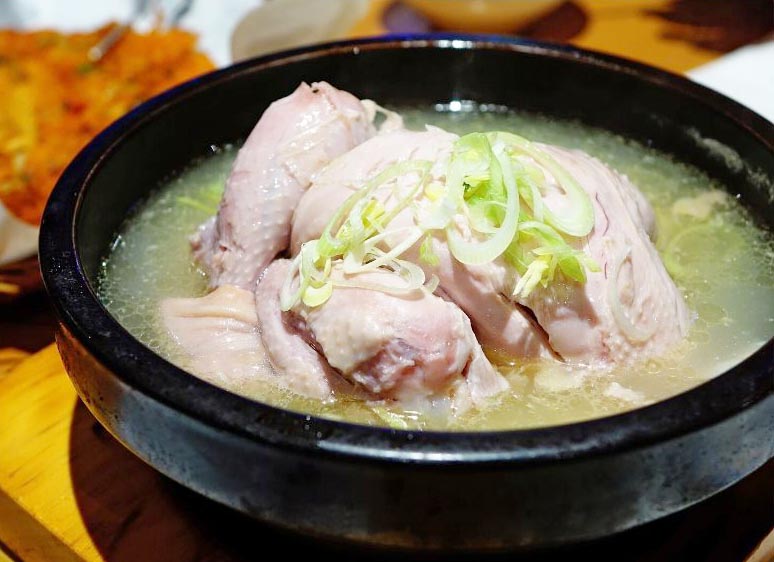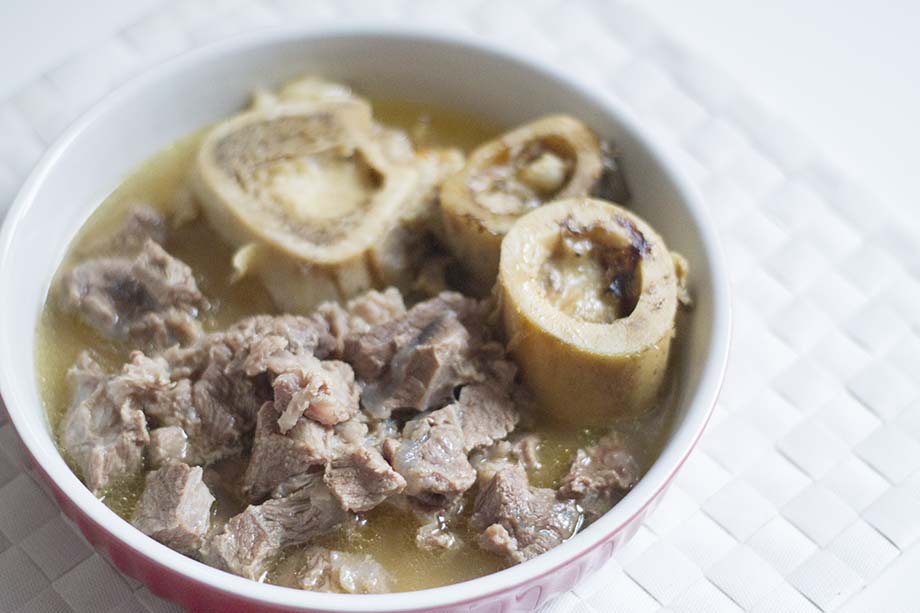
Do you remember when you were sick, mom would make you sip chicken soup and it would actually make you feel better? It’s a common thought that the soup is loaded with vitamins and minerals, but many would say it just alleviates the rather unpleasant effects of cold. For one, it keeps you hydrated which is very important for the body on a situation of having colds. Second, it’s a good mucus stimulant, helps dissolve or lighten the congestion. The salt (I’m sure your mom put salt) helps soothe the throat. If there’s ginger and other spices (garlic, pepper) it will reduce inflammation brought about by the cold.
Still, credit should be given where it’s due – minerals from bones can’t be discounted, and we’re only talking about chicken here. Jack Canfield’s grandmother always believed in the healing powers of chicken soup and told him that it can cure everything. Thus, came the birth of the self-help book, Chicken Soup for the Soul.
What is Bone Broth
Bone broth (interchangeably stock), is the liquid produce from animal bones, meat, vegetables in water (or wine) that is usually simmered for longer hours. It is used as the basis of soups, sauces, and other dishes. In grocery stores, they are sold in jars. By bones, it is not limited to beef, pork, or chicken, you can use turkey, veal, lamb, even venison and duck. Surprisingly or not, chicken feet complete with its skin, cartilage, tendons, and bones are a good source of collagen, add that up too!

How To Make Bone Broth
Here’s a basic recipe for making bone broth:
Ingredients:
- 2-4 pounds of beef or chicken bones, or both (ideally with some meat and connective tissue still attached)
- 2-3 celery stalks, chopped
- 1-2 onions, chopped
- 2-3 garlic cloves, chopped
- some peppercorns (will tenderize meat if included)
- 2 tablespoons of apple cider vinegar
- Water (enough to cover the bones)
Instructions:
- Preheat the oven to 400°F (200°C).
- Place the bones in a roasting pan or baking sheet and roast for 30-45 minutes, until they are browned and fragrant.
- Transfer the bones to a large stockpot or slow cooker, along with any pan drippings.
- Add the chopped vegetables, garlic, and apple cider vinegar to the pot.
- Cover the ingredients with enough water to fully submerge them, and bring to a boil.
- Reduce the heat to a low simmer, and cook for 12-48 hours, skimming off any foam or impurities that rise to the surface.
- After the broth has simmered for the desired amount of time, remove the bones and vegetables with a slotted spoon or strainer.
- Strain the broth through a fine-mesh sieve or cheesecloth to remove any remaining solids.
- Allow the broth to cool, then store it in the refrigerator or freezer until ready to use.
Note: You can customize the flavor of your bone broth by adding herbs and spices, such as bay leaves, thyme, or ginger, and by adjusting the cooking time to your preference.
Benefits of Bone Broth
Bone broth has gained popularity in recent years due to its potential health benefits. While more research is needed to fully understand the extent of these benefits, some of the potential benefits of bone broth include:
- Improved joint health: Bone broth is a rich source of collagen, which is a protein that makes up the connective tissues in our bodies, including our joints. Consuming collagen-rich bone broth may help support joint health and reduce joint pain.
- Better digestion: The gelatin in bone broth can help to soothe and heal the lining of the gut, which may improve digestion and reduce inflammation in the digestive tract.
- Stronger immune system: Bone broth contains several nutrients, such as zinc, magnesium, and potassium, that are essential for immune system function. Consuming bone broth may help to support immune system function and reduce the risk of infections and illnesses.
- Healthier skin, hair, and nails: Collagen is also a key component of our skin, hair, and nails, and consuming bone broth may help to improve their appearance and health.
- Improved sleep and mood: Some people report feeling more relaxed and sleeping better after consuming bone broth, possibly due to its high glycine content, which is an amino acid that can have a calming effect on the body.
Overall, bone broth is a nutritious and flavorful addition to the diet that may offer several potential health benefits. However, it’s important to note that bone broth should be consumed as part of a balanced diet and not relied upon as a cure-all for any particular health condition.

What Dishes to Make With Bone Broth
Bone broth is a versatile ingredient that can be used in a variety of dishes to add flavor, nutrition, and depth. Here are a few examples of dishes that can be made with bone broth:
Soups and stews: Bone broth is commonly used as a base for soups and stews, providing a rich and savory flavor. Examples include chicken noodle soup, beef stew, and vegetable soup.
Sauces and gravies: Bone broth can be used to make flavorful sauces and gravies for meats, vegetables, and pastas. Examples include mushroom gravy, red wine sauce, and béarnaise sauce.
Rice and grain dishes: (Although we are lowcarb practitioners, this suggestion is for those who are not.) Bone broth can be used in place of water or stock when cooking rice and grains, adding extra flavor and nutrition to dishes like risotto, quinoa bowls, and pilafs.
Mashed cauliflower and sauteed vegetables: (Another suggestion for non-lowcarb practitioners.) For an extra flavorful twist on mashed vegetables, try using bone broth in place of milk or cream. Bone broth can also be used when roasting or sautéing vegetables.
Smoothies and drinks: Some people enjoy sipping on bone broth as a warm, nourishing beverage. Bone broth can also be used as a base for smoothies, providing a nutrient-dense and savory flavor profile.
These are just a few examples of dishes that can be made with bone broth. With its versatile flavor and nutrition, bone broth can be used in countless ways to add depth and nourishment to your favorite recipes.

Bone Broth Storage Methods
Bone broth should be stored properly to maintain its quality and freshness. Here are some tips on how to store bone broth at home:
- Refrigerate: If you plan to use the bone broth within a few days, you can store it in the refrigerator. Allow the broth to cool to room temperature, then transfer it to an airtight container and refrigerate. The broth should be consumed within 3-4 days. A mason jar or any glass container is best to use.
- Freeze: For longer-term storage, bone broth can be frozen. Allow the broth to cool to room temperature, then transfer it to a freezer-safe container, leaving a bit of space at the top for expansion. You can freeze the broth for up to 6 months.
- Portion control: If you plan to freeze the broth, consider dividing it into smaller portions before freezing. This will allow you to thaw only the amount you need, preventing waste and ensuring that the broth stays fresh.
- Label and date: Whether you store bone broth in the refrigerator or freezer, be sure to label the container with the date and contents. This will help you keep track of how long the broth has been stored and ensure that you use it before it goes bad.
By following these storage tips, you can ensure that your bone broth stays fresh and flavorful, whether you plan to use it right away or save it for later.
|
|
|
Sources:
Health Benefits of Bone Broth : https://www.webmd.com/diet/health-benefits-bone-broth
How to Make Bone Broth : https://www.wholesomeyum.com/bone-broth/
Best Uses For The Bone Broth In Your Pantry : https://www.tastingtable.com/1015555/absolute-best-uses-for-the-bone-broth-in-your-pantry/






Leave a Reply